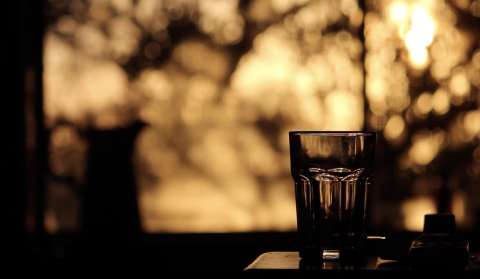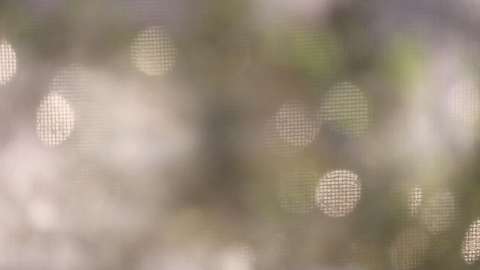
Space of In-Betweeness by Georgia Button
With text by Kate Meakin
Digital video with sound, 5 min
Image courtesy of the artist
© Georgia Button
Depth of field
Ivory
Grandma made my dress, couldn’t envision what I was going to do if we ran out – oh that’s no problem she said, I’ve got some net that I used to have over the babies cribs… Crackling vocal cords, an unfinished sentence. Tenderly spoken by an elderly woman, this fragment of a story feels like a family heirloom. We find our way through the gaps in her speech to envision a modest white wedding gown and matching veil cut from the same cloth. Familiarity with a space, another person, can draw down a veil of sorts, eliciting domestic blindness. Behind this opaque screen of fabric the eyes are dulled to the full picture ahead, senses register movements over details – when lifted things can seem unbearably clear.
Platinum
“The rim broke”, a tie has snapped. Once you fly the nest you are always in a state of returning to the place you once called home. You can’t quite re-enter this space as an insider once you leave, although it might still seem to belong to you on a primal, nostalgic level. The family home becomes more a part of you than you are of it. Georgia’s family name – Button – feels apt for a work that seeks out touch. The camera lens glides and quivers, like a waking eye struggling to register its point of focus, like a mind reaching to grasp exactly what its body is trying to tell it. There is a sensory pleasure to this disarticulation – an ambiguity that allows one to feel intermittent desire and dread towards the idea of possessing a whole image. A camera that seeks to feel rather than explain what is happening before it. An apprehensive gaze unsure of how to sit with its surroundings.
Silver
Light sensitive silver particles cluster to trace an image first in the emulsion of film, then on paper in a pool of developer liquids inside the photography dark room. There is a physicality to the chemistry of these analogue processes that the automated functions of digital photography so often remove. The pervasive smart phone with its slim, hard edge and symmetrical design is complicit in this numbing, despite being the site where we physically touch and share images everyday. The phone’s tiny lens is nearly to the same ratio as the eyes on the human body. When in use the camera’s vision takes up the entire screen, feeling all consuming. Other apps are always running in the background silently mining all sorts of details about our interests and movements. Their findings come back to haunt us through algorithmic advertisements, like symbols planted in our unconsciousness that return to us through dreams. We still seem to see so much when we close our eyes. In the scheme of things the eyes are just the first stop on the map of our bodies, where images we encounter travel through.
Gold
My first visual memory is also a bodily, tactile one; the memory of falling into a creek as a one year old and opening my eyes and lungs to the shallow bed of water. As my throat rejected the muddied fluid, my eyes opened wider with fascination at the glimmering multi-hued pebbles beneath them, before being pulled back to land and air by my panicked mother. I wouldn’t have known how to leave the rippling spectacle otherwise. Panned of all its mineral riches a century before, the creek itself was an old gold mining site. We had camped in a canvas tent, but as the story was narrated back to me as a child I somehow replaced the memory image of this shelter with a colonial settler’s hut, picturing a chimney emitting cosy puffs of smoke.
Written by Kate Meakin
Kate Meakin is an artist living and working in Narmm/Melbourne.
Georgia Button is an emerging, South Australian based multidisciplinary artist, working primarily with video, sound and installation. Her current works examine sensory aspects of various lived experiences, investigated through the materiality of particular camera techniques. She creates work between her residence in Adelaide and her family farm in the Mid-North, South Australia. After completing the first year of a Bachelor of Creative Arts (Screen) at Flinders University in 2016, Georgia transferred to Adelaide Central School of Art, in order to pursue moving-images in a visual art context.
The footage in this work was filmed on Nukunu land (Mid-North, South Australia). I acknowledge the Traditional Owners of this land, the Nukunu people, and pay my respects to elders past present.
Georgia Button
Space of In-Betweeness, 2019
Digital video with sound, 5 min
Image courtesy of the artist
© Georgia Button


